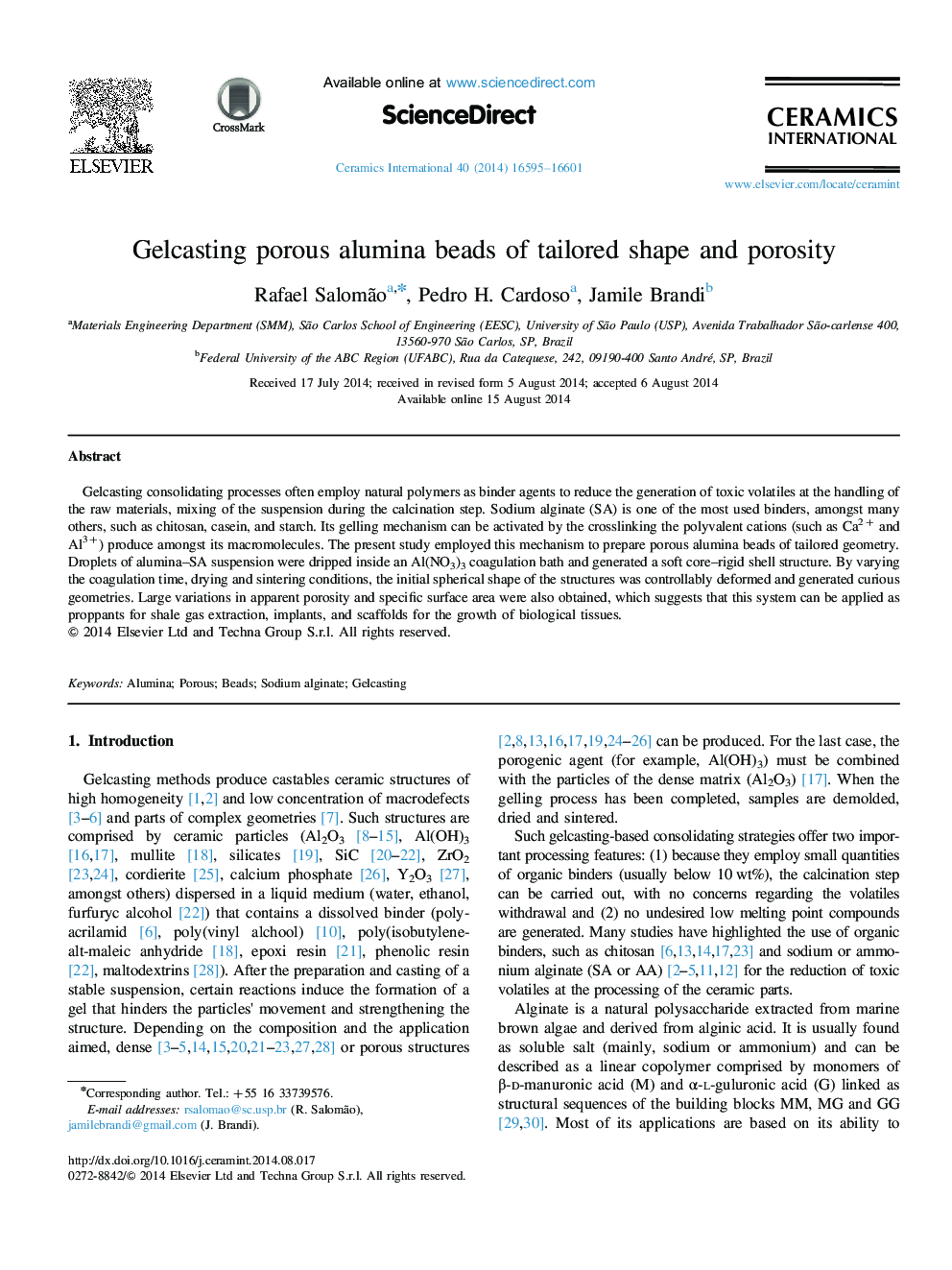| Article ID | Journal | Published Year | Pages | File Type |
|---|---|---|---|---|
| 1460542 | Ceramics International | 2014 | 7 Pages |
Gelcasting consolidating processes often employ natural polymers as binder agents to reduce the generation of toxic volatiles at the handling of the raw materials, mixing of the suspension during the calcination step. Sodium alginate (SA) is one of the most used binders, amongst many others, such as chitosan, casein, and starch. Its gelling mechanism can be activated by the crosslinking the polyvalent cations (such as Ca2+ and Al3+) produce amongst its macromolecules. The present study employed this mechanism to prepare porous alumina beads of tailored geometry. Droplets of alumina–SA suspension were dripped inside an Al(NO3)3 coagulation bath and generated a soft core–rigid shell structure. By varying the coagulation time, drying and sintering conditions, the initial spherical shape of the structures was controllably deformed and generated curious geometries. Large variations in apparent porosity and specific surface area were also obtained, which suggests that this system can be applied as proppants for shale gas extraction, implants, and scaffolds for the growth of biological tissues.
